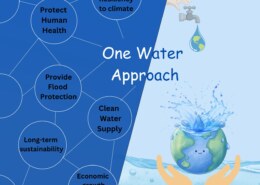Examine how the public’s involvement in the EIA process affects project results in India.
Capacity building of stakeholders, including project proponents and regulators, is essential for improving the Environmental Impact Assessment (EIA) practice in India. Effective capacity building can address several key areas and challenges within the EIA process, leading to better environmental outRead more
Capacity building of stakeholders, including project proponents and regulators, is essential for improving the Environmental Impact Assessment (EIA) practice in India. Effective capacity building can address several key areas and challenges within the EIA process, leading to better environmental outcomes and more robust assessments. Here’s a discussion on why and how capacity building is needed:
1. Enhancing Technical Expertise
Complex Assessments: EIA requires specialized knowledge to assess environmental impacts accurately. Project proponents and regulators need technical expertise in areas such as environmental science, ecology, and impact modeling.
Training Programs: Regular training programs and workshops can help stakeholders stay updated with the latest techniques and methodologies for environmental assessments.
2. Improving Understanding of Regulations and Procedures
Regulatory Frameworks: Understanding the legal and regulatory frameworks governing EIA is crucial for both project proponents and regulators. Capacity building can ensure that stakeholders are well-versed in relevant laws, guidelines, and procedural requirements.
Compliance and Implementation: Training can improve compliance with regulatory requirements and enhance the quality of EIAs by ensuring that stakeholders follow established protocols and standards.
3. Promoting Effective Data Collection and Analysis
Data Quality: High-quality data is essential for accurate impact assessments. Capacity building can improve stakeholders’ skills in data collection, analysis, and interpretation, leading to more reliable assessments.
Monitoring Techniques: Providing knowledge about advanced monitoring techniques and tools can enhance the accuracy of environmental data and improve the overall assessment process.
4. Strengthening Public Participation and Stakeholder Engagement
Engagement Skills: Effective public participation is a critical component of the EIA process. Capacity building can help project proponents and regulators develop skills for meaningful stakeholder engagement and address public concerns effectively.
Communication Strategies: Training in communication strategies and public consultation methods can help in fostering transparency and trust among stakeholders.
5. Facilitating Inter-Agency Coordination
Coordinated Approach: EIA often involves multiple agencies and stakeholders. Building capacity for inter-agency coordination can improve collaboration and ensure that different perspectives are integrated into the assessment process.
Information Sharing: Developing systems for information sharing and coordination among agencies can enhance the efficiency and effectiveness of the EIA process.
6. Ensuring Effective Mitigation and Management
Mitigation Measures: Project proponents need to design and implement effective mitigation measures to address identified impacts. Capacity building can provide guidance on best practices for developing and applying these measures.
Management Plans: Training in the preparation and execution of environmental management plans can help ensure that mitigation measures are implemented effectively and monitored.
7. Addressing Emerging Challenges
Adaptability: The field of environmental assessment is continuously evolving, with new challenges arising from emerging technologies and industries. Capacity building can help stakeholders adapt to these changes and address new environmental issues effectively.
Innovation: Encouraging innovation in assessment methods and tools through capacity building can improve the overall quality and relevance of EIAs.
Recommendations for Capacity Building Initiatives:
Develop Comprehensive Training Programs: Create and implement training programs for project proponents, regulators, and other stakeholders that cover technical, regulatory, and procedural aspects of EIA.
Promote Knowledge Exchange: Facilitate knowledge exchange through workshops, seminars, and conferences to share best practices, experiences, and advancements in the field of EIA.
Enhance Institutional Support: Provide institutional support and resources to both project proponents and regulatory agencies to strengthen their capacity for conducting and overseeing EIAs.
Foster Collaboration and Networking: Encourage collaboration and networking among stakeholders, including government agencies, academic institutions, and industry experts, to build a supportive network for EIA practice.
Monitor and Evaluate Training Effectiveness: Regularly monitor and evaluate the effectiveness of capacity-building initiatives to ensure that they meet the needs of stakeholders and contribute to improving EIA practices.
In summary, capacity building for stakeholders involved in the EIA process is crucial for improving the overall quality and effectiveness of environmental assessments in India. By enhancing technical expertise, regulatory understanding, data analysis skills, public engagement, and inter-agency coordination, stakeholders can better address environmental challenges and contribute to more sustainable development outcomes.
See less


Role of Public Participation in the EIA Process and Its Influence on Project Outcomes in India 1. Importance of Public Participation in EIA Public participation is a critical component of the Environmental Impact Assessment (EIA) process. It ensures that the perspectives and concerns of affected comRead more
Role of Public Participation in the EIA Process and Its Influence on Project Outcomes in India
1. Importance of Public Participation in EIA
Public participation is a critical component of the Environmental Impact Assessment (EIA) process. It ensures that the perspectives and concerns of affected communities are considered, leading to more informed and balanced decision-making.
2. Mechanisms of Public Participation
Public participation in the EIA process typically involves several mechanisms:
3. Influence on Project Outcomes
Public participation can significantly influence project outcomes in several ways:
4. Challenges and Limitations
Despite its benefits, public participation in the EIA process faces several challenges:
5. Recent Developments and Examples
Recent initiatives and examples highlight the evolving role of public participation in the EIA process:
Conclusion
Public participation in the EIA process plays a crucial role in ensuring that environmental and social impacts are comprehensively assessed and addressed. By fostering transparency, improving decision-making, and enhancing project outcomes, it contributes to more sustainable and equitable development. However, for public participation to be effective, it must be meaningful, inclusive, and integrated into all stages of the EIA process.
See less